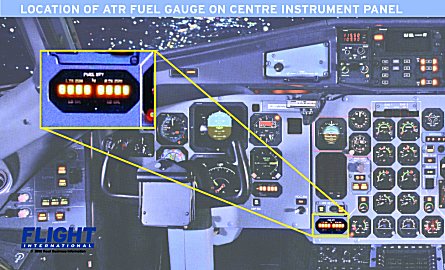Italian investigators are recommending European regulators consider changing fuel-system certification criteria to require low-fuel warning systems to be independent of cockpit fuel-quantity gauges.

It follows the revelation that the crew of a Tuninter ATR 72 did not receive a low-fuel warning before the turboprop suffered fuel exhaustion and ditched off the Sicilian coast on 6 August – and that an earlier low-fuel situation also went unnoticed. Italian investigation agency Agenzia Nazionale per la Sicurezza del Volo (ANSV) says this was because the ATR 72’s fuel warning system depended on the information from the fuel-quantity indicator, an indicator which was reading incorrectly because it was designed to be fitted only in a smaller ATR 42.
The fuel-quantity indicator has two amber low-level warning lights – one for each of the wing tanks – which activate, along with an aural chime, when the fuel content of the corresponding tank falls below 160kg (350lb).
This means that a low-fuel warning should sound if the aircraft is carrying less than 320kg overall. But the warnings did not sound because the wrongly-fitted indicator falsely showed that the aircraft was carrying at least 1,800kg more fuel than was actually in the tanks.
Investigators have revealed that, immediately before the fatal flight, the aircraft had performed a Tunis-Bari service and landed at Bari in Italy with just 305kg of fuel in total – a level which should have triggered a low-fuel alert to the crew.
But the gauge incorrectly indicated that the ATR’s tanks contained 2,300kg. The aircraft subsequently took on just 265kg of fuel at Bari, departing for Djerba with only 570kg in total, but which showed as 2,700kg to the crew.
“The fuel low-level warning system of the [crashed ATR 72] was directly linked to the fuel-quantity gauging system…the activation of the visual and aural alerts is controlled by the fuel-quantity indicator,” says ANSV.
“As a consequence, even though the actual fuel quantity in each tank…lowered below 160kg, the low fuel-quantity warnings did not activate.”
In a recommendation to the European Aviation Safety Agency, ANSV says: “[EASA] should consider the possibility to change the fuel-system certification regulation for public transport aircraft, in order to require that the fuel low-level warnings be independent from the fuel-gauging systems.”
DAVID KAMINSKI -MORROW/LONDON
Source: Flight International



















